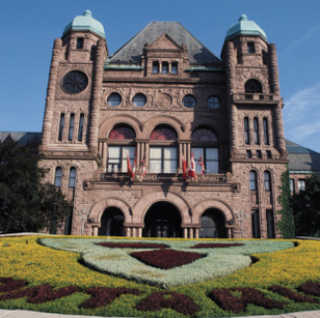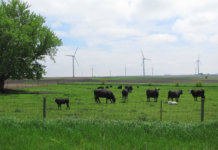 In August 2006, Ontario's Independent Electricity System Operator issued an urgent request to Ontarians to reduce consumption in order to avoid rotating brownouts. Peak demand reached a record high, and it was clear that new generation and transmission would be required to meet increasing demand.
In August 2006, Ontario's Independent Electricity System Operator issued an urgent request to Ontarians to reduce consumption in order to avoid rotating brownouts. Peak demand reached a record high, and it was clear that new generation and transmission would be required to meet increasing demand.
Fast-forward to 2009, when the Green Energy and Green Economy Act (GEA) was introduced as Ontario's answer to kick-start the building of a stronger, cleaner, more flexible and affordable power system, while also driving job creation and reinvigorating the province's manufacturing sector.
Indeed, over the past two years, the wind industry has made great strides in Ontario. Installed capacity will surpass 2 GW by the end of this year, with an additional 2 GW contracted for construction and major new manufacturing facilities established in Tillsonburg and Windsor to supplement an existing facility in Fort Erie. As a result, thousands of jobs have been created.
The GEA featured the establishment of a feed-in-tariff (FIT) program, a streamlined environmental approvals process, and the uploading of planning authority from the municipal to the provincial level. These features can be boiled down to procurement and process.
Although much of the growth in the wind energy industry in Ontario can be attributed to the specific provisions of the GEA, it is just as important – if not more important – that the GEA has been accompanied by aggressive targets and a clear set of rules of engagement that has provided the industry with the confidence to invest in this province.
Political uncertainty
As voters get ready to head to the polls on Oct. 6, there has been much public attention paid to the politicization of Ontario's electricity system due to public concerns about rising electricity costs.
However, all of the rhetoric can't hide the fact that Ontario needs new transmission capability and new, clean and affordable generation capacity. All new forms of generation are more expensive than the energy produced by infrastructure that was built 45 years ago – a reality not fully acknowledged by all political parties.
Wind energy has now proven to be a cost-competitive and reliable source of new generation for Ontario's changing energy needs. In order for new clean and efficient electricity generation capacity to flourish, however, Ontario needs a stable and long-lived policy framework.
The province's Long Term Energy Plan targets more than 7 GW of total installed wind energy capacity by 2018. According to a recent study conducted by ClearSky Advisors, this would provide Ontario with 80,000 person years of employment created, $16.4 billion in private investment and $1.1 billion in the forms of lease payments and tax revenue for municipalities and landowners.
All three main political parties have expressed a commitment to wind energy, but they have very different proposals. The short-term result of potential changes in the rules of engagement is a hesitation on the part of the industry to invest. It also allows for myths and uncertainty to incubate in the minds of the public.
The three parties have released their platforms, each with varying degrees of emphasis on renewable energy.
The governing Liberal Party promises to maintain the FIT program and to generally "stay the course" with the GEA and the Long Term Energy Plan. The Official Opposition Progressive Conservatives, on the other hand, have promised to do away with the FIT program and restore municipal planning authority. While they provide no target for future wind energy development, they maintain that wind energy will have a role to play, albeit via an "open and fair process" at "affordable prices."
The third party, the New Democratic Party of Ontario, has promised to keep the FIT program for projects smaller than 30 MW, and for those above to have a central agency determine where best they should be developed with a focus on community and regional interests. They remain committed to aggressive targets for wind energy development.
The politicization of electricity issues, and the diverse perspectives of the political parties, has created an air of uncertainty within the wind energy industry, both inside and outside Ontario. Unfortunately for Ontario, the uncertainty caused by the politicization of wind energy in the province is reducing the ability of Ontario to compete for the investment required to secure these benefits.
Ontario is quickly becoming a global leader in renewable energy development. To continue on that path, Ontario must have a stable policy framework, permitting the province to truly capitalize on the development of a new green economy that creates jobs for Ontario's manufacturing sector while bringing significant benefits to rural residents and communities. To do otherwise will only lead to uncertainty and stall any progress enjoyed to date.
Justin Rangooni is Ontario policy manager at the Canadian Wind Energy Association. He can be reached at justinrangooni@canwea.ca.



